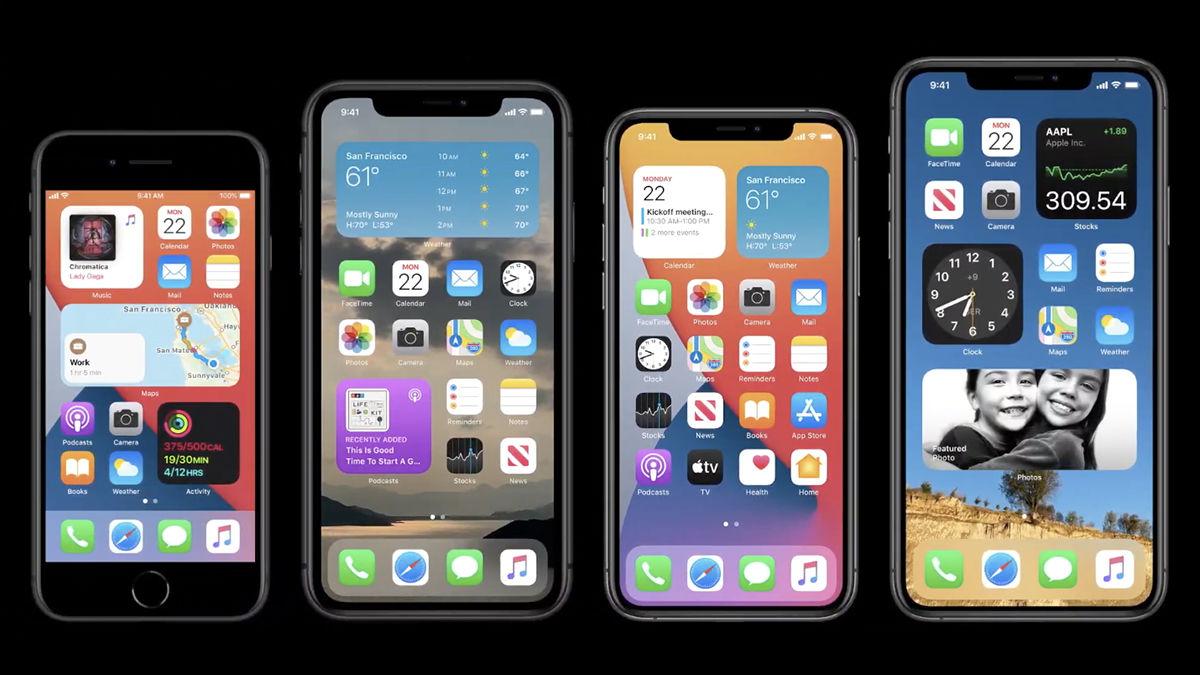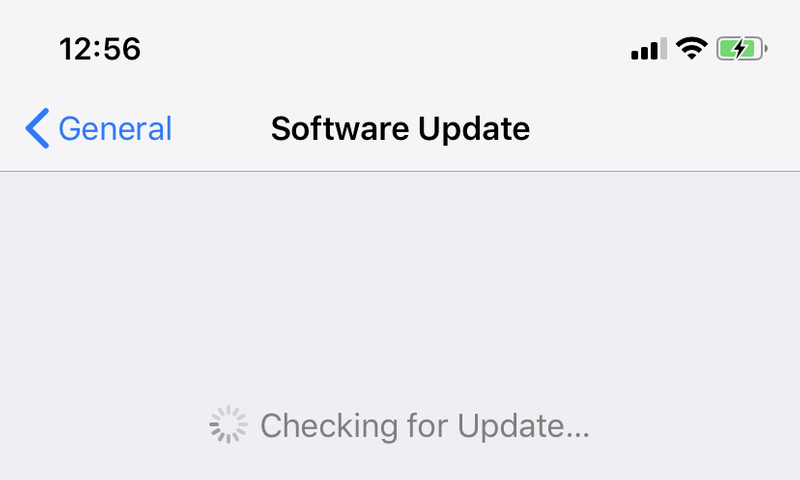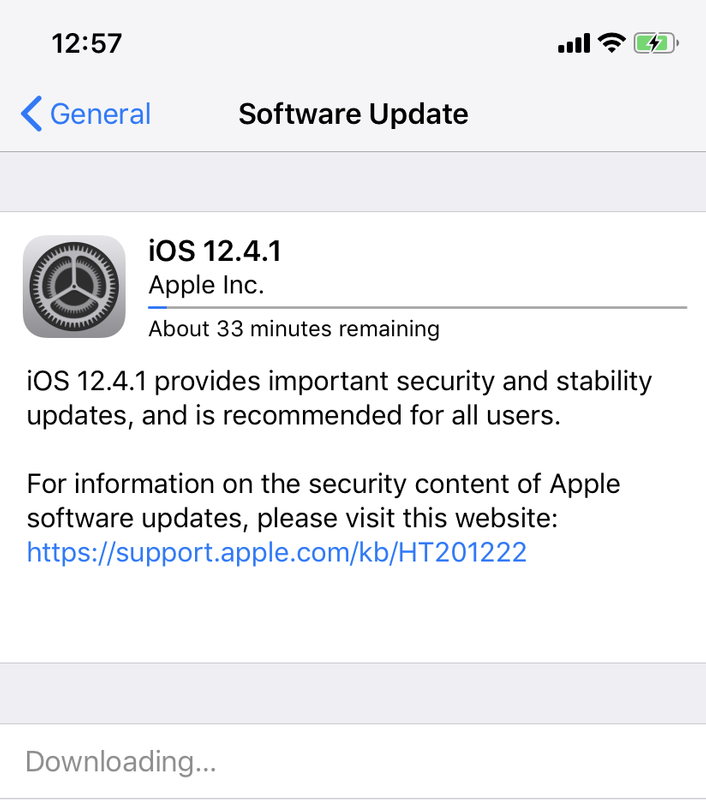iOS 14 – the newest version of the operating system software for iPhones – will launch to the public later today (Wednesday 16 September), from around 6pm in the UK and 10am/1pm on the west and east coasts in the US. In this article we run through everything you need to do to update your iPhone to the new software, including what to do if you encounter problems, like not having enough space or not being able to connect to Wi-Fi.
It’s worth doing a bit of housework with your phone first, like making sure it’s backed up, and clearing some space so that you have enough storage for the new update. We’ll run through what you should do first; but you can jump straight to the update process below.
If you aren’t sure whether you want to update your iPhone to iOS 14 maybe read our comparison between iOS 13 and iOS 14 first, or you could find out about the best new features in iOS 14. We are hearing reports that suggest the final version of iOS 14 might be buggy and there could be issues with third party apps as developers haven’t yet finalised their versions, so be aware of this before you install, find out more at iOS 14 Problems and Fixes.
iPadOS 16 will also be available from 16 September 2020. If you want to update your iPad read about how to do that here: How to get iPadOS 14 on an iPad.

How to get your iPhone ready for iOS 14
Before you update to iOS 14, we recommend that you do the following:
- Back up your iPhone – you can do this using iCloud, or via the Finder on a Mac or iTunes on a PC. We explain how to Back up here. In the past people have lost data like old SMS messages and photos during an update, so we can’t emphasise enough how important this step is!
- If you want to be extra cautious you could save a copy of iOS 13 – we explain how below. This is in case you have to go back later – but if this is beyond you, don’t worry about this step.
- Make some space on your iPhone. You will need a fair amount of space available for the update. If you don’t have a spare 20GB or so on your phone then delete some apps to make room – you can reinstall them afterwards as you already own them. If you don’t have enough space, iOS will also offer to temporarily remove some files for you.
- Plug your iPhone into a power supply – iOS 14 won’t install if you don’t plug into the mains.
- Make sure you’re downloading over Wi-Fi, not via 3G or 4G, or you may end up running out of data. Also, check it’s a safe network. (We don’t recommend you do this over hotel Wi-Fi, for instance.) We have some tips on how to download iOS 14 if you don’t have Wi-Fi.
How to update to iOS 14
iOS 14 will become available to download on Wednesday 16 September, at around 6pm in the UK, 10am in California, 1pm in New York, etc. So the first step is to wait until then! Although, we’d recommend you wait a little longer as inevitably there will be a rush as everyone else downloads iOS 14 and Apple’s servers will slow right down.
Here’s how to download and install the latest version of iOS on your iPhone:
- Go to Settings > General > Software Update. iOS will check if there’s a new version; if there isn’t, you’ll see the message ‘Your software is up to date.’ Sometimes there’s a bit of a wait until the software becomes available.

- Assuming there is a new version available, tap Download and Install.
- Enter your passcode when prompted, and agree to the terms & conditions if required.
- Your device will download the update in the background. You’ll see an indication of how much time it is likely to take – in our experience this is very far from the mark! Double it/triple it even! You can at least carry on with other things while the download happens. Once the download has finished you will receive a notification on your iPhone.

- Now Tap Details on the Notification window. This will take you back to Settings > General > Software Update.
- Tap Install Now. (Again, expect this step to take a while – especially if it’s on the night the software arrives!)
- Alternatively, you can select Later. iOS will offer to update during the night – you just need to make sure the device is plugged in.
How to download iOS 14 if you don’t have Wi-Fi
Are you really excited about getting iOS 14 but don’t have access to Wi-Fi right now? Or maybe you do, but it’s hotel/restaurant Wi-Fi, and you aren’t sure you can trust it (stay safe out there!). You might be wondering whether you can update iOS 14 using cellular data or mobile data?
Apple used to have a download cap that meant you couldn’t download more than 200MB over a data connection. This cap was lifted in iOS 13, so you can now download apps of any size. Go to Settings > iTunes & App Store > App Downloads. You can choose from Ask If Over 200MB, Always Allow or Always Ask.
If you are still running iOS 12, you will still have the data cap meaning you can’t download iOS 13 over data – but there is a workaround as long as you have a Mac.
Before you start – make sure you don’t use up all your data for the month! Even unlimited data isn’t always completely unlimited and you might be penalised later on.
To download iOS 14 using mobile data (or cellular data) follow these steps:
- Create a Hotspot from your iPhone – this way you can use the data connection from your iPhone to connect to the web on your Mac.
- Now open iTunes and plug in your iPhone.
- Click on the icon in iTunes that represents your iPhone.
- Click on Check for Updates.
- Run through the options to download and install iOS 14.
Your Mac will proceed to download iOS 14 using your data connection from your iPhone. You will then be able to use iTunes to install iOS 14 on your iPhone.
Alternatively, if your Mac happens to be connected to the internet via Ethernet, or another way, you could download iOS using iTunes or the Finder in exactly the same way as above. (Note that when Apple resigned iTunes with the arrival of Catalina so from macOS Catalina the Finder manages things like software downloads).
How to download iOS 14 if you don’t have space
Downloading via the Finder or iTunes is also a great way to install iOS 14 on your iPhone if you don’t have enough space on your iPhone, so follow the steps above.
Alternatively, you could try these steps to make some more space on your iPhone.
Will iPhone update erase my data
Understandably, if you are low on space you may be worried that you will lose some of your data if you install the new iPhone update. It’s understandable that some people are concerned about this, because it’s happened in the past. However, it should be the case that once the iOS 14 update has installed all your data will be intact, and if it isn’t, well you have a backup don’t you?
Make sure you backup your phone before updating.
Why won’t my iPhone update?
You may be wondering why your iPhone isn’t showing the iOS 14 update as available. There are a few reasons why this might be the case.
- You might just be too eager – there can be a delay before the iOS 14 update appears. We say to expect it at about 6pm on Wednesday 16 September (in the UK), but it could take longer to appear on your device. Inevitably someone you know will see it sooner.
- Your phone might be too old to run iOS 14. Find out if your iPhone can get iOS 14 here.
- You might not be connected to Wi-Fi – as we said above, you need Wi-Fi, but there are workarounds.
- You might not be plugged in – you need to be plugged in or Apple will stop the installation happening (just in case you run out of battery half-way through).
If those points don’t apply to you, try installing via the Finder or iTunes as we detailed above.
iPhone update is frozen
So, you followed all our advice and yet the update is taking AGES! Perhaps your iPhone appears to have frozen, or the update is stuck near the end. What should you do?
We explain what to do if iOS won’t install here: What to do if you can’t update your iPhone.
How to upgrade iOS from a beta version
If you previously tried out a beta version of iOS ahead of its full release, you should note that in order to get upcoming non-beta iOS releases you will need to remove the Apple configuration profile from your device.
You can do this by going to Settings > General > Profile and selecting iOS Beta Software Profile, then choosing Delete Profile and entering your passcode to confirm the change. From now on you will receive official updates (rather than beta updates) as normal.
How to get a copy of the old version of iOS
If you change your mind later and want to downgrade to iOS 13. (Note that downgrading is really tricky, so we can’t even guarantee that having the old version will mean you can revert to iOS 13.)
- On your Mac open the Finder.
- Hold down the Option/Alt key in Finder and select Go > Library.
- Select the Software Updates folder for your device if it’s there.
- Alternatively, launch your web browser and go to IPSW.me and find the right one for your device.
We have an article that goes through how to revert to iOS 13 or earlier here.
If you have already started the update and are finding that there are problems, read what to do if you can’t update iOS.
And if your iPhone doesn’t run iOS 14, you might want to check our roundup of the Best iPhone deals so you can save money while bagging yourself a shiny new device.
